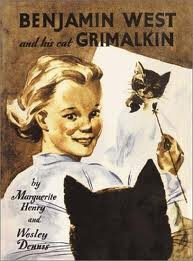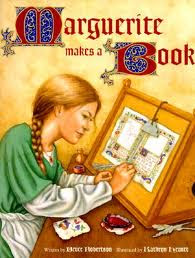I started AO year 1 with my youngest daughter (aka Moozle) at the beginning of this year just before she turned 7 years of age.
This has been the first time in about 19 years of homeschooling that I've actually followed a set curriculum - I basically stuck to the weekly schedule and added some extras.
My planning is very simple. I have the page below as a Word document and each week I go to the weekly AO schedule & copy & paste the books & chapters from there onto this page, add in Composer, Artist Study and whatever other areas I want to cover and print it out. As each item gets done it gets ticked. If we miss something one week I just carry it over to the next one.
When we first began she had just clicked with reading but it was hard work for her. If I'd read a book to her she would peruse it afterwards but put it aside quickly. She would have been happy to sit beside me all day and have me read aloud to her and she would narrate almost word perfect when I asked her about anything I'd read aloud.
One day after we'd been reading Peter Pan she snuggled up in a chair with this book and stayed there most of the afternoon. From that point on her reading ability took off. I think it was a combination of readiness and access to a book clothed in literary language.
Here are some of the things that this year has included:
Audiobooks
A Little Princess by Francis Hodgson Burnett (Free Librivox recording narrated very nicely by Karen Savage)
Focus on the Family Audio dramas - very well done:
Focus on the Family Audio dramas - very well done:
The Secret Garden by Frances Hodgson Burnett - 2 hours long
Anne of Green Gables by L.M. Montgomery - 4 hours long
Winnie the Pooh, The House at Pooh Corner and A Party for Pooh - BBC Radio Collection read by Alan Bennett; abridged but done very well)
Wulf the Saxon by G.A. Henty; read by Jim Weiss (8hrs long)
Shakespeare for Children (A Midsummer Night’s Dream & The Taming of the Shrew) by Jim Weiss (about 1 hour long)
Farmer Boy & On the Banks of Plum Creek by Laura Ingalls Wilder; read by Cherry Jones
Free Reading
Childhood of Famous Americans: Laura Ingalls Wilder, Thomas A. Edison, Betsy Ross, Daniel Boone.
Milly-Molly-Mandy series of books by Joyce Lankester Brisely
The Box Car Children by Gertrude Chandler Warner
The Sarah Whitcher Story by Elizabeth Yates
An inspiring story based on a true incident. A little girl becomes lost in a forest and a search begins. The searchers grow desperate and hopeless but her father's trust in God doesn't waver.
Madeline Takes Command by Ethel Brill
Based on fact, this is a stirring tale of a 14 year French Canadian girl who is left in charge of her younger brothers in her parent's absence. When their settlement is threatened by the Iroquois she takes charge.
Winding Valley Farm: Annie's Story by Anna Pellowski
Based on the experiences of the author's mother, this is the story of Annie, a girl growing up on a Wisconsin farm in the early 1900's. The author has also written three other books about different members of her family.
The Martha Years by Melissa Wiley
Melissa Wiley has written a series of books based on Laura Ingalls Wilder's great grandmother. We have the unabridged hardback volumes but they're hard to find so grab them if you do find them. Here's a list of them in chronological order.
They've been reprinted in abridged paperback editions.
.
Composer & Artist Study (Read Alouds)
The Young Brahms by Sybil Deucher
Joseph Haydn, The Merry Little Peasant & Franz Schubert and His Merry Friends by Opal Wheeler & Sybil Deucher

Benjamin West & his Cat Grimalkin by Marguerite Henry
Joseph Haydn, The Merry Little Peasant & Franz Schubert and His Merry Friends by Opal Wheeler & Sybil Deucher

Benjamin West & his Cat Grimalkin by Marguerite Henry
At the age of seven, Benjamin, a Quaker boy in 18th Century America who had never seen an actual picture himself, suddenly developed an urge and a gift for drawing pictures. He learnt from his Indian friends how to dig colours from the earth and his cat, Grimalkin, provided the hairs for Benjamin’s paintbrushes. A lovely, humorous story, well-illustrated with line drawings.
Harmony Fine Arts Grade 1 – I started this about 18 months ago because Moozle loves drawing & any sort of art & the suggestions and schedule here helped me to do this on a regular basis.
A picture study narration - the painting was observed closely for about five minutes and then a drawing was done from memory.
Some drawing practice from Drawing with Children by Mona Brookes. Moozle loves this book but I haven't started going through it properly yet, something I plan to do soon.
Handicrafts
A First Book of Knitting by Gosse & Allerton
I bought this book because it use rhymes to teach the different stitches & also I thought the patterns might be useful for me as they are fairly basic! There are instructions in the book on how to makes wooden knitting needles which one of the boys made for his little sister. So far we've done casting on & plain stitch. I've also taught her to do basic chain stitch in crotchet.
Beaded gecko key rings - made with wire (instead of ribbon as pattern says) & pony beads. Pattern here.

I bought this book because it use rhymes to teach the different stitches & also I thought the patterns might be useful for me as they are fairly basic! There are instructions in the book on how to makes wooden knitting needles which one of the boys made for his little sister. So far we've done casting on & plain stitch. I've also taught her to do basic chain stitch in crotchet.
Beaded gecko key rings - made with wire (instead of ribbon as pattern says) & pony beads. Pattern here.

Marguerite Makes a Book by Kathryn Hewitt
The lovely illustrations inspired Moozle to try her hand at 'illumination.'
Narrating Beautiful Stories From Shakespeare with paper dolls
Favourite AO books this year:
Peter Pan, Beautiful Stories From Shakespeare, Burgess Bird Book & Viking Tales.
A family game we have all enjoyed is Articulate. It's a great game for a wide range of ages - played in teams, you get a card, and the idea is to describe as many words as possible on the card to your team mates in just 30 seconds without saying "sounds like" or rhymes with" and it can be hilarious.
The other day when a group of us played, Moozle got the word Valhalla on her card so her clue was, "This was heaven for the Vikings." We'd been reading Viking Tales in previous weeks so she knew what the word meant. The game is meant to be played with a 30 second timer but we don't always use it and sometimes we just use the cards & play when we are on a long drive.
Kayaking
Movies
Anne of Green Gables
The Sound of Music
Mary Poppins
Tin Tin & The Secret of the Unicorn - We watched this as a family when we were on holiday & it was fun.
French
Rosetta Stone, which we've had for years and Skoldo Elementary by Lucy Montgomery. We have the book & CD but we've only used the CD at this stage which has 15 songs included.
Science & Nature Study
Chick & Chickens by Gail Gibbons.
One day I might write about our chicken saga but for now I'll tell you we have four of them - Princess, Tinkerbell, Black Beauty & Cinderella. The last two replaced Amy & Snow White who died/disappeared much to Moozle's distress as they are her charges. Anyhow, this book helped me to answer her questions as I've had no prior experience with chooks at all. Well illustrated with a good amount of information.
Living with Wildlife by Eva Murray is a book I picked up at a library sale. It's a 'comprehensive guide to encounters with our native animals.' It's been most helpful at times as we do have regular encounters with the natives. The author was forced to take more of an interest in wildlife when she had problems with possums, snakes, lizards, injured birds and what not in and around her own home so her book is practical and born of her own experience.
Exploring Creation with Astronomy
I read sections of this aloud, mainly the parts about the earth, sun & moon.
Maths
We completed A Beka Year 1 earlier this year and went on to year 2 but it's not going very well. A Beka does tend to go quickly so I also did some Rod & Staff Year 2. This is basically what we've done with all 7 of our children in the first couple of years mainly because it was all that was available when we first started homeschooling & it worked well for all of them up until now.
I think I'll use Everyday Number Stories for a while. (update- my free kindle version was woeful with missing bits everywhere so I've downloaded the the PDF. For Aussie users you will need to go to the archive section and click on the third row down to do this.)
Update 2: we've just got back into lessons after a couple of weeks holiday week and I've been trying out some ideas on teaching Maths from Volume 1 of Charlotte Mason, a book I've been slowly reading over the last couple of months. I'm also using the 100 charts and addition charts from Donna Young.
In conclusion, Ambelside Online Year 1 seems like it was custom built for my daughter. Even the couple of books that she said she found difficult or wordy (Parables of Nature & Just So Stories) were worthwhile and did engage her at times. I think if you had a child that struggled to pay attention some of the books might be better left until later but I think it's good to give them a try as sometimes a child can surprise you and what we think won't interest them just might. I wouldn't have chosen Peter Pan and in fact a couple of times my daughter said she didn't understand what I'd read but by the time I was half way through it she was hooked (pardon the pun).
Also, the AO curriculum is a bit like, 'How do you eat an elephant?' - 'One bite at a time,' and once I made a start it fell into place fairly quickly.
If you would like to add some Australian living books to the Ambleside curriculum you will find some great suggestions here and here. See also my page: 'Towards an Australian Charlotte Mason Curriculum.'

































